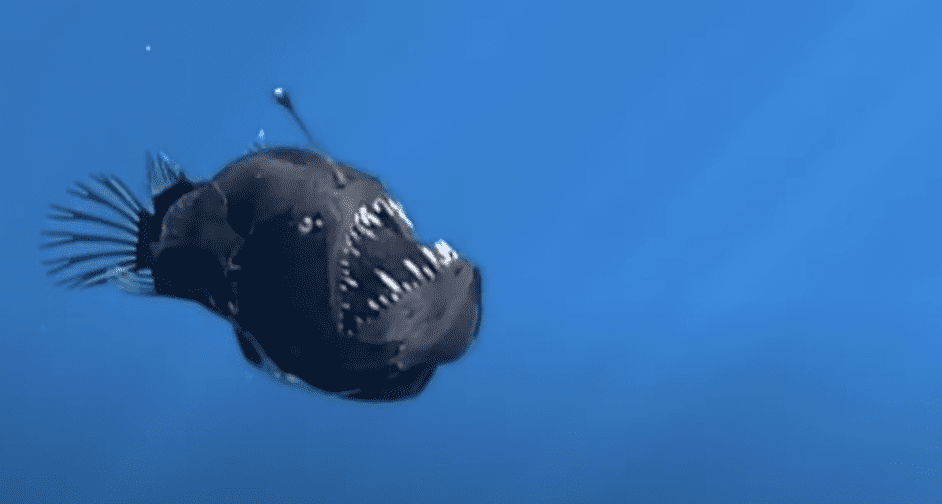
A rare deep-sea fish, previously observed alive only once, has been spotted in what is believed to be its first sighting in daylight. According to National Geographic, on January 26, researchers from the Condrik Tenerife NGO encountered the striking humpback anglerfish, scientifically known as Melanocetus johnsonii, near the Canary Islands off Tenerife’s coast. Witnessing this remarkable sight was marine wildlife photographer David Jara Boguna, who shared, “It felt like a dream come true.” He recalled being fascinated by deep-sea creatures as a child through illustrations in a book. “Those animals looked so surreal to me.”
The elusive fish, measuring about six inches in length and often referred to as the black seadevil, was viewed alive only once before a decade ago, and during that encounter, it was found nearly 2,000 feet deep. These unique creatures can dwell as deep as 6,500 feet underwater. “Seeing a deep-sea inhabitant so close to the surface is extremely rare,” said Bruce Robison, a senior scientist at the Monterey Bay Aquarium Research Institute, who recorded the previous sighting in 2014. As noted by Oceanographic, all other known sightings of the humpback anglerfish have involved deceased specimens, larvae, or images captured by submersibles.
The reasons behind this anglerfish’s unusual appearance at the ocean’s surface remain uncertain, although several theories have emerged. It may have been propelled upward due to a water current from nearby volcanic activity, or perhaps it was caught and later expelled by a larger predator. Another possibility is that it consumed a fish containing a gas gland, leading to a buoyancy issue that caused the anglerfish to rise higher. Additionally, it is suggested that some anglerfish may ascend to the surface during El Niño events.
Story continues below
Unfortunately, the fish reportedly died within hours of being spotted, and its remains were transported to Tenerife’s Museum of Nature and Archaeology for further examination. Researchers involved in the expedition, along with others, remain in awe of this sighting. “When I first viewed the video, I honestly couldn’t believe my eyes,” said Kory Evans, a fish biologist at Rice University, as quoted by National Geographic. “It looked like something generated by artificial intelligence.” (Explore more discoveries stories.)









